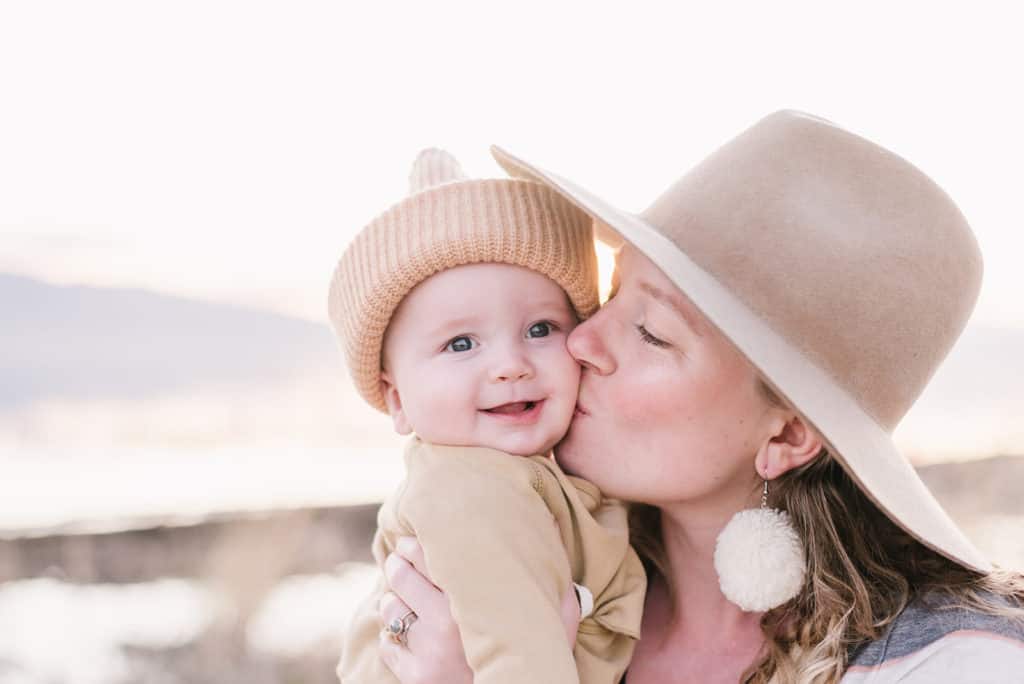Three Tips to Surviving Postpartum Life
With lacation consultant, Stephanie Hadfield
![]()

![]()
FEED YOUR BABY, FEED YOURSELF, SLEEP
I don’t know who needs to hear this, but the newborn period can be REALLY intense. You’re physically recovering from birth, you’re going through the significant emotional shifts of becoming a parent or adding another sweet soul to your family, and you’ve got a tiny little new person to figure out how to feed and keep safe. You’re going to be tired. So tired. And if you’re having a baby in early 2020, you’re doing all of that under the uncertainty and stress and social isolation of a global pandemic.
With all that in mind, it’s critical to understand that your most important priorities in those early days are FEED YOUR BABY, FEED YOURSELF, AND SLEEP. If at all possible, let go of anything else that doesn’t fit into those categories. If you’ve got a partner who takes responsibility for household tasks, that’s fantastic. Keep in mind though, that while they’re not recovering from the physical effects of birth, they will also need time to get acquainted with baby and support YOU, so it might be helpful to take steps to simplify responsibilities for the whole family. That might mean lowering expectations and heading into survival mode for a few weeks.
Use disposable dishes and utensils to minimize the amount of dishes to wash. Sure, clothes need to be washed and dried, but maybe your family could just skip the folding and putting away and get dressed straight from the clean laundry basket for a little while. Maybe the living room floor doesn’t need to be vacuumed quite as often as it was before baby was born. Sit down and have a talk with your partner about what absolutely needs to get done around the house during survival mode to make sure that you’re both on the same page. Clear communication is KEY.
TAKE ADVANTAGE OF THE 4TH TRIMESTER
A newborn baby has been held in close contact with you for the past 9 months of pregnancy, and they don’t expect that to change much just because they’re suddenly on the outside of your body. In fact, it can be helpful to think of the first three months of baby’s life as the 4th trimester– an extension of your pregnancy. Whatever you can do to mimic those conditions will go a long way towards keeping baby happy and growing and getting breastfeeding off to a good start. Mimicking the conditions of pregnancy basically means lots of skin to skin cuddles and holding and frequent feedings.
Skin to skin. Research shows many benefits of spending lots of time in skin to skin contact with your baby. It helps keep babies warmer, reduces crying, and increases breastfeeding frequency. Spending a lot of time cuddling skin to skin is ‘being in the breastaurant” as I like to call it. This makes it easy to catch your baby’s early feeding cues, which means that baby will be more patient to work on getting a great latch. If you don’t like feeling totally exposed, wearing a lightweight cardigan, large button-down shirt, or robe over you and your baby together is a great solution for coverage for you while allowing easy access for breastfeeding. You can even wear your baby skin-to-skin in a babywearing wrap with a cardigan or robe over the top if you need to be up and about for a bit. After the first few days, your baby will get many of the same benefits of close contact if you want to transition to lightly-dressed cuddles. That means you in a light t-shirt and baby in a onesie, but still close and cuddly.
Frequent feeds. During pregnancy, your baby was connected to the placenta via the umbilical cord– a set-up that was basically like a 24/7 all-you-can-eat buffet. After birth, babies still need to feed often, and they’re figuring out for the first time what it means to feel hungry. It is very common for newborns to cluster their feedings together during some parts of the day. Some feedings may be only 30 minutes apart and others 3 hours apart. When in doubt, offer the breast. Rather than worrying about the intervals between feeds, count the number of feeds in a 24 hour period. Your baby should be waking to feed a minimum of 8-10 times, although 10-12 feedings in 24 hours is most common during the newborn phase. Frequent feedings are important for baby’s growth and well-being, and they’re also critical for establishing great milk production.
SIGNS THAT BREASTFEEDING IS GOING WELL
- Latching is comfortable. Tenderness at the very beginning of a feeding or so is common and nothing to worry about if it goes away after 30-60 seconds. If it continues past that point or you feel toe-curling pain, unlatch baby and try again. If pain lasts for an entire feed, or you have damage to your nipples like blisters, cracking and/or bleeding, you should get some help with latching right away.
- Your baby is having plenty of wet and poopy diapers. For the first 5 days, your baby should be having 1 wet diaper per day of life (for example 3 wets on day 3). Poops should start to become a lighter color by day 3-4, and be a mustardy yellow color by the end of the first week. After the first week, expect 5-6 wets and 3-4 poops per day.
- Newborns sleep a lot, but your baby should be waking to feed a bare minimum of 8-10 times in 24 hours and should have periods of alertness.
If anything feels off based on the signs above or you’re having a hard time with breastfeeding, don’t hesitate to reach out for expert help. Breastfeeding problems are usually easier to resolve if you don’t wait to get help. As an IBCLC, I’ve helped hundreds of families with a wide range of breastfeeding issues, and I’d love to help you too. You can visit bit.ly/LLSteph to book an appointment with me (video consults are available). I’m part of a group practice of amazing IBCLCs, so if my schedule doesn’t work for you, you can call or text our scheduling line at 801-702-7840 to book an appointment with one of my fantastic colleagues.

WHAT OTHERS CAN DO TO SUPPORT POSTPARTUM FAMILIES DURING SOCIAL DISTANCING
Feed Them. Pickup groceries and/or takeout for them. If you live far away, order gift cards to their favorite restaurants.
Check in with them. Call. Text. Facetime. Marco Polo. Let them know you’re thinking of them. Oooohh and aaaahhhh over how adorable their baby is. Ask about their birth experience. Ask “How are you?”, and then LISTEN and VALIDATE. Resist the urge to give unsolicited advice.
Remember the older kids. Send special toys/books/activities that can be used to keep toddlers and preschoolers busy when the new baby is feeding. Facetime/video call to read stories to older children, draw pictures with them, play i-spy, sing songs together, whatever you can do to give the parents a little break.
Ask if they need a babywearing wrap or carrier. Research shows that babywearing significantly decreases both infant crying and parental depression and anxiety. Gifting new parents with a great carrier can allow them to meet baby’s very real biological need for closeness while also freeing up their hands to be able to meet their own needs and care for other children if necessary.
If they’re struggling, offer to help connect them with professional help. If they want the support, and you’re able, you could offer to pay for video lactation consults or mental health sessions.

Stephanie Weight Hadfield, IBCLC has been working with birthing and breastfeeding families since 2007. She became an IBCLC and joined Lactation Link’s team in 2017. Since then, she has helped hundreds of families with breastfeeding and has earned a reputation as Lactation Link’s resident “research junkie”. She is passionate about providing up-to-date, evidence-based lactation support with a gentle, non-judgmental approach. Her clients LOVE working with her, and she was recently recognized as one of Utah’s best lactation consultants. She lives in Provo with her husband Joe and their four kids and crazy dog. In her free time, she loves knitting, reading, and hiking. You can find her on instagram as @IBCLCSteph and book an appointment with her by visiting bit.ly/LLSteph
Have a new little one? Here are some more Newborn related posts…



